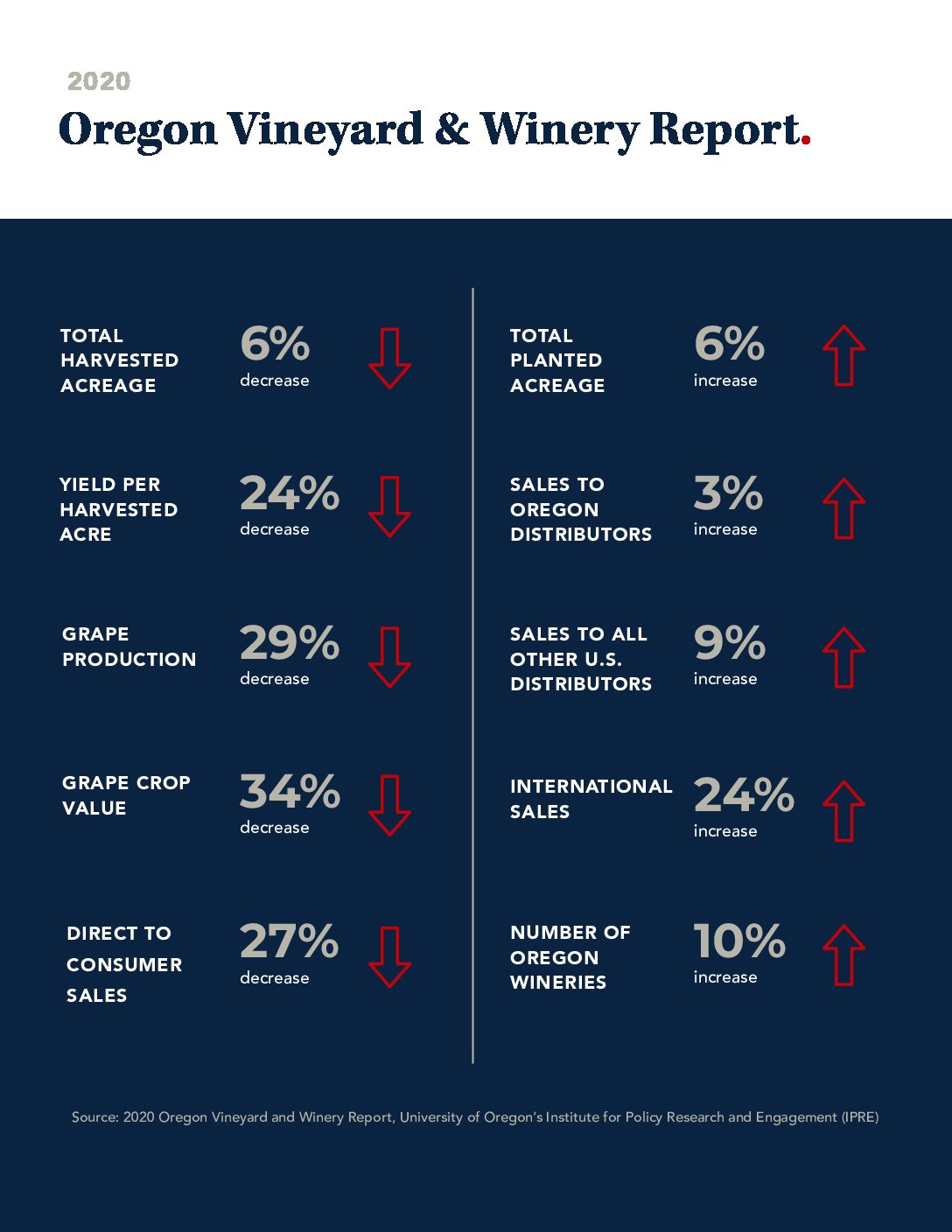Overview
In a vintage defined by the COVID-19 pandemic, wildfires preceding harvest, and naturally lower yields, Oregon grape production and crush declined substantially in 2020.
- With lower fruit set leading to lower yields
 and September wildfire smoke impacting harvest decisions, yield per harvested acre decreased by 24% and harvested acreage declined by 6.4% resulting in a 29% reduction in grape production—more than 30,000 tons less than in 2019.
and September wildfire smoke impacting harvest decisions, yield per harvested acre decreased by 24% and harvested acreage declined by 6.4% resulting in a 29% reduction in grape production—more than 30,000 tons less than in 2019. - The estimated value of wine grape production decreased 34% or by nearly $80million to about $158 million.
- Total planted acreage increased by more than 2,100 acres from 37,399 to 39,531, an increase of 5.7%. Increases were seen throughout the state in both the number of vineyards and total acres planted to grapevines.
- The leading variety in planted acreage and production remains Pinot Noir, accounting for 59% of all planted acreage and 49% of wine grape production.
- Total tons crushed statewide decreased by 23.1% from 84,590 tons to 65,009 tons, with modest increases seen in the Rogue Valley and Columbia River regions.
- Case sales were roughly flat, growing 0.7% across all channels. Sales through direct-to-consumer channels declined by 26.8% overall, with some tasting room losses offset by wine club and web/phone orders. Sales into distributed channels increased by 3.5% in Oregon and 9.1% in the rest of the U.S.
- Export sales increased by 24.3%. The leading export market for Oregon wine continues to be Canada, which accounted for 46% of export sales. Notable growth was seen in all markets.
Reports
Download the full report (.pdf) >>
Download the data tables (.xlsx) >>
Download planted acreage by county table (.xlsx) >>
Smoke and COVID impacts
Given the unprecedented nature of this vintage, respondents were asked about the impacts of wildfire smoke and the COVID-19 pandemic on their growing season, sales, harvest, and crush. The IPRE team has put together a document summarizing the effects of these forces of nature as described by growers and producers.
Methodology
This report is produced by the Institute for Policy Research and Engagement (IPRE) at the University of Oregon on behalf of the Oregon Wine Board. The IPRE research team has prepared a document outlining their data collection and analysis methods. Please contact Bob Parker at the IPRE with questions.

Table 4 of the 2020 report shows no chardonnay in any price category for the Rogue Valley. For cabernet sauvignon, the variety listed immediately above chardonnay, 1.6-2.8K tons is reported. This must be a transcription error. Please check and let me know. Thanks–MJ Daspit
Hello MJ – can you please send your question via email to [email protected] and we will look into getting it answered? Thanks.